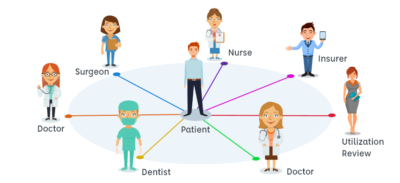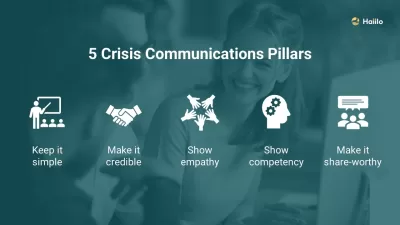Are you a healthcare marketer struggling to navigate the complex landscape of the industry? You’re not alone. Healthcare marketing is a unique challenge that requires a deep understanding of the industry, the regulatory environment, and the customer. In this article, we will explore the top healthcare marketing challenges and provide actionable solutions to help you overcome them.
One of the biggest healthcare marketing challenges is compliance with regulations such as the Health Insurance Portability and Accountability Act (HIPAA). Protecting patient data is a top priority, and failure to comply with regulations can result in costly fines and damage to your reputation. We will provide tips on how to navigate the regulatory environment and ensure that your marketing efforts are compliant.
Another healthcare marketing challenge is budgeting. Healthcare marketing budgets can be tight, and it can be difficult to allocate resources effectively. We will explore cost-effective strategies to help you maximise your marketing budget and drive results. Additionally, we will discuss how to leverage new technologies to improve your marketing efforts and stay ahead of the competition.
Understanding the Healthcare Market
Understanding the healthcare market and its complexities is crucial to overcoming healthcare marketing challenges. This requires a deep understanding of various factors, such as demographics, regulatory environment, and technological advancements. In this section, we will discuss some of those factors that affect healthcare marketing.

Regulatory Environment
The regulatory environment in healthcare is complex and ever-changing. Healthcare marketers must comply with various regulations, such as HIPAA, FDA, and FTC regulations. HIPAA regulations govern the privacy and security of patient information, while FDA regulations govern the marketing and promotion of drugs and medical devices. FTC regulations govern the advertising and marketing practices of healthcare providers.
To comply with these regulations, healthcare marketers must be aware of the latest changes and updates. They must also ensure that their marketing practices are ethical and transparent and that their marketing materials are accurate and do not make false or misleading claims.
Patient Demographics

Patient demographics play a crucial role in healthcare marketing. Healthcare marketers must understand the demographics of their target audience, including age, gender, income, and education level. They must also understand their target audience’s health needs and preferences.
Healthcare marketers can use various tools, such as market research, surveys, and focus groups, to understand patient demographics and tailor their marketing messages to resonate with their target audience.
Technological Advancements

Technological advancements have revolutionized healthcare marketing. Healthcare marketers can use various digital marketing techniques, such as social media marketing, email marketing, and search engine optimization, to reach their target audience. They can also use telemedicine and other digital health technologies to improve patient care and engagement.
Healthcare marketers must stay current with technological advancements and trends. They must also ensure that their digital marketing practices comply with various regulations, such as HIPAA and GDPR.
Developing a Patient-Centric Approach
Developing a patient-centric approach is vital to the success of your healthcare marketing strategy. By focusing on patient engagement and personalized communication, you can build trust and loyalty with your patients, improving health outcomes and a more substantial reputation for your organization.

Patient Engagement
Patient engagement is all about creating a positive experience for your patients. This can be achieved through various methods, such as providing educational materials, offering convenient appointment scheduling, and responding to patient questions and concerns in a timely and respectful manner.
One effective way to engage patients is through social media. By creating a social media presence for your organization, you can connect with patients on a more personal level and share valuable information about your services and expertise. You can also use social media to gather feedback from patients and use it to improve their experience.
Personalized Communication
Personalized communication is key to building strong relationships with your patients. This means tailoring your communication to their specific needs and preferences, such as using their preferred communication method (e.g. email, phone, text) and addressing them by name.
One way to personalize your communication is through email marketing. By segmenting your email list based on patient demographics and interests, you can send targeted messages that are more likely to resonate with your patients. You can also use email marketing to promote your services and educate patients on important health topics.
Leveraging Digital Marketing
Digital marketing is a powerful tool that can help healthcare providers reach a wider audience and connect with patients more meaningfully. Here are some of the most effective digital marketing strategies that you can use to overcome the challenges in healthcare marketing.

SEO and Content Marketing
Search Engine Optimization (SEO) is the process of optimizing your website to rank higher in search engine results pages (SERPs). By creating high-quality, informative content that is optimized for the keywords your target audience is searching for, you can improve your website’s visibility and attract more traffic.
To create effective content, you need to understand your target audience and their needs. What questions are they asking? What problems are they trying to solve? By answering these questions in your content, you can establish your expertise and build trust with your audience.
Social Media Outreach
Social media is a powerful tool for connecting with patients and building your brand. By creating engaging, informative content that resonates with your audience, you can build a loyal following and establish yourself as a thought leader in your field.
To be successful on social media, you need to understand your audience and the platforms they use. What kind of content do they engage with? What times of day are they most active? By tailoring your content and posting schedule to your audience, you can maximize engagement and reach.
Email Marketing
Email marketing is a highly effective way to reach patients and keep them engaged with your brand. By creating targeted, personalized campaigns that provide value to your audience, you can build strong relationships and drive conversions.
To be successful with email marketing, you need to focus on creating engaging, relevant content that resonates with your audience. What kind of information do they find valuable? What kind of offers do they respond to? By answering these questions, you can create effective campaigns that drive results.
Addressing Privacy and Compliance
One of the biggest challenges in healthcare marketing is addressing privacy and compliance. As a healthcare marketer, it is essential to understand the regulations and laws that govern the industry. Two critical areas of compliance are HIPAA and data security.

HIPAA Compliance
HIPAA (Health Insurance Portability and Accountability Act) is a federal law that mandates the protection and confidential handling of health information for patients. HIPAA regulations are one of the most significant challenges in healthcare marketing because of the privacy concerns raised. As a healthcare marketer, you must ensure that your marketing efforts comply with HIPAA regulations. You need to ensure that any data collected and used in your marketing efforts is protected and kept confidential.
To ensure HIPAA compliance, you need to take several steps. First, you need to train your team on HIPAA regulations and ensure that they understand the importance of protecting patient information. Second, you need to ensure that any third-party vendors you work with are also HIPAA compliant. Finally, you need to implement a robust HIPAA compliance program that includes regular audits and reviews to ensure that your marketing efforts are compliant.
Data Security

Data security is another critical area of compliance in healthcare marketing. As a healthcare marketer, you need to ensure that any data collected and used in your marketing efforts is secure and protected. Data breaches can have severe consequences, including loss of patient trust and significant financial penalties.
To ensure data security, you need to take several steps. First, you need to ensure that any data collected is stored securely and that only authorized personnel have access to it. Second, you need to implement robust security measures, such as encryption and firewalls, to protect against data breaches. Finally, you need to have a data breach response plan in place to minimize the impact of any breaches that do occur.
Optimizing Healthcare Marketing Budgets
One of the biggest challenges in healthcare marketing is budget allocation. With limited resources, optimising your marketing budget to ensure maximum ROI is important. Here are some tips to help you optimize your healthcare marketing budget:

Resource Allocation
When allocating your marketing budget, it’s important to prioritize your resources. Start by identifying your target audience and their channels to consume information. For example, if your target audience is seniors, you may want to focus on direct mail and print advertising, as these channels are more likely to reach this demographic.
Next, consider the cost of each marketing channel and the potential ROI. For example, social media may be a cost-effective way to reach a large audience, but it may not be as effective as direct mail in terms of generating leads. Use data and analytics to track the performance of each channel and adjust your budget accordingly.
ROI Measurement

Measuring ROI is critical to optimizing your marketing budget. Start by setting clear goals and KPIs for each marketing campaign. For example, if you’re running a social media campaign, your goal may be to generate leads or increase website traffic. Use tracking tools to measure the performance of each campaign and calculate your ROI.
It’s also important to track your customers’ lifetime value. This will help you determine the long-term impact of your marketing campaigns and adjust your budget accordingly. For example, if your social media campaign generates a lot of leads but few conversions, you may need to adjust your messaging or targeting to improve your ROI.
Building Brand Trust and Reputation in Healthcare Marketing
In healthcare marketing, building brand trust and reputation is crucial for attracting and retaining patients. Patients are more likely to choose healthcare providers with a positive reputation and trustworthy brand. Here are some ways to build and maintain brand trust and reputation.

Reputation Management
Reputation management involves actively monitoring and managing your online reputation. Patients often turn to online reviews to evaluate healthcare providers. Therefore, responding to positive and negative reviews promptly and professionally is important. You can also encourage satisfied patients to leave reviews on popular websites like Yelp and Google My Business.
Another way to manage your reputation is to maintain an active and engaging social media presence. Platforms such as Facebook, Twitter, and Instagram provide an opportunity to connect with patients and share valuable information. However, it is important to maintain a professional tone and avoid controversial topics.
Crisis Communication

It is important to have a crisis communication plan in place in the event of a crisis, such as a data breach or medical error. The plan should include steps for identifying and responding to the crisis, communicating with patients and stakeholders, and mitigating damage to your brand.
It is important to be transparent and honest with patients during a crisis. Patients appreciate honesty and are more likely to forgive mistakes if they feel their healthcare provider is being transparent and taking steps to prevent similar incidents in the future.
Frequently Asked Questions
What strategies can healthcare marketers employ to address the unique challenges of their industry?
One important strategy is to focus on building trust and credibility with patients. This can be achieved by emphasizing the quality of care, highlighting the expertise of healthcare providers, and ensuring HIPAA compliance. Another strategy is to leverage digital marketing channels to reach patients where they are most active. This can include social media, email marketing, and search engine optimization (SEO). Finally, healthcare marketers can also consider partnering with other organizations to expand their reach and build their brand.
How can healthcare organizations effectively conduct market analysis to improve their marketing efforts?
To effectively conduct market analysis, healthcare organizations should first define their target audience and understand their needs and preferences. This can be achieved through market research, surveys, and focus groups. Once this information is gathered, healthcare organizations can use it to develop targeted marketing campaigns that speak directly to their audience. It is also important to regularly monitor and analyze marketing metrics to assess the effectiveness of campaigns and adjust strategies as needed.
How can healthcare marketing teams adapt the traditional marketing mix to suit industry-specific needs?
One of the ways they can adapt the traditional marketing mix to suit idustry-specific needs is through focusing on building relationships with patients and providers through targeted content marketing and social media engagement. They can also leverage digital marketing channels to reach patients where they are most active, and use data analytics to better understand patient needs and preferences. Finally, healthcare marketing teams can also consider partnering with other organizations to expand their reach and build their brand.
How should a healthcare provider approach marketing challenges when discontinuing a major service or product?
When discontinuing a major service or product, healthcare providers should approach marketing challenges carefully and thoughtfully. They should communicate the decision to patients and providers clearly and transparently, and provide them with alternative options or referrals as appropriate. It is also important to consider the impact on the organization’s brand and reputation, and to develop a plan for managing any negative feedback or fallout.
What are the key components of a successful healthcare marketing strategy in today’s digital landscape?
The key components of a successful healthcare marketing strategy in today’s digital landscape include a deep understanding of the target audience, a focus on building trust and credibility, a commitment to HIPAA compliance and patient privacy, and a willingness to experiment and adapt to changing technology and trends. Additionally, successful healthcare marketing strategies should leverage digital marketing channels to reach patients where they are most active, and use data analytics to better understand patient needs and preferences. Finally, healthcare marketing strategies should be integrated with the organization’s overall business goals and objectives, and regularly monitored and adjusted as needed.
